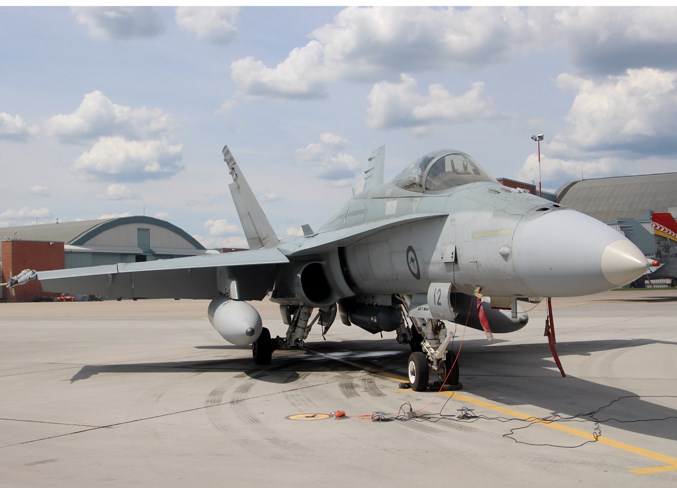The Royal Canadian Air Force’s (RCAF) largest international training event of the year wrapped up on June 22 in Cold Lake.
Exercises like Maple Flag were developed after an observation was made during the Vietnam war, when 90 per cent of losses occurred during the first ten missions for junior crew members. They thought flight survival would improve if pilots were exposed to missions in advance.
From June 11 to 22, Canada welcomed air crews from Australia, Belgium, and NATO to Exercise Maple Flag.
The aim is to stimulate real missions for crews, and give everyone involved a chance to discuss any issues during a mass debriefing, once the exercise has concluded.
“The goal is to simulate what we want our crews to be able to do,” explained 4 Wing Commander Col. Paul Doyle.
Doyle stressed that the exercises are meant to challenge participants to perform at the highest possible tactical level, and the scenarios during Maple Flag reflect real-life experiences air crews may face in their careers.
“I want to make sure that our military forces are ready when, not if. We, as military professionals, want to be able to anticipate what’s going to be happening, and that we’re able to adapt our systems and tactics to whatever the evolving situation may be,” Doyle expressed.
The scale of exercises has changed over the years, and the length of Maple Flag is based on the demand of the participants. The threats in each mission are unique to the country participating, and is tailored to fit the enemies an air crew may face when they’re in the field.
The simplicity and the size of available air space at the Canadian Forces Base (CFB) in Cold Lake is what makes it uniquely qualified to host Maple Flag. The terrain gives pilots the opportunity to experience a stimulated mission from beginning to end in a training environment.
“The procedures that we’re applying here in Alberta are the same in almost any other air domain you’d be flying in,” explained Doyle. “Air is air. The stuff that we’re doing in exercise here, is applicable no matter where the air crew is.”
Visiting countries enjoyed the training atmosphere 4 Wing has to offer. Australian crews felt particularly welcome by the City of Cold Lake.
“I’m certainly enjoying the interaction between the squadrons that are participating,” expressed Wing Commander Michael Grant, Australian Commanding Officer of the 75 squadron base in Tindal. “We’ve been really well hosted. Everyone from the base and the folks in town are getting along so well. That’s carrying through well socially through to the professional side.”
The exercise includes specific training activities such as defensive and offensive counter air, high-value asset defence, joint-person recovery, and air interdiction.
Another feature of Maple Flag is it creates relationships between allies with CFB. By flying with other countries’ air crews, it’s easier for pilots down the road to discuss missions, especially if they have trained together in the past.
Doyle experienced this first-hand during a mission, when he recognized a couple of Dutch pilots he had flown with during Excercise Maple Flag in 2007.
“It was interesting, because right away we had that connection. I would argue that it facilitated a lot of what we were doing for the mission, because it was easy for them to approach me to discuss developments.”



